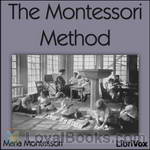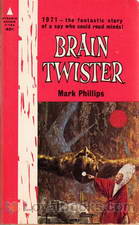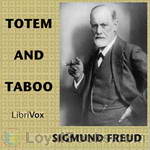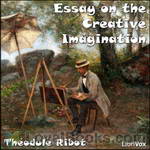|
Books Should Be Free Loyal Books Free Public Domain Audiobooks & eBook Downloads |
|
|
Books Should Be Free Loyal Books Free Public Domain Audiobooks & eBook Downloads |
|
Psychology Books |
|---|
|
Book type:
Sort by:
View by:
|
By: Marguerite Bernard and Edith Serrell | |
|---|---|
 Deer Godchild
Deer Godchild
A young New-Yorker of twelve heard an appeal for the Fatherless Children of France and his heart was touched. He had no money, but he resolved to give his spare time and his utmost energy to support a "kid in France." The French child needed ten cents worth of extra food each day, in order to grow up with strength and courage. The little American godfather earned those ten cents; he sold newspapers at the subway entrance, after school hours, and undertook an amazing variety of more or less lucrative odd jobs... | |
By: Maria Montessori (1870-1952) | |
|---|---|
 The Montessori Method
The Montessori Method
In the early 1900’s Dr. Maria Montessori began to reform educational methods with her work the ‘Case dei Bambini’ in Rome, Italy. Montessori began her work by developing methods to educate mentally retarded children, the method she developed was used with several children who at age eight took the state examinations in reading and writing, the children passed with above average scores. Because of this success (which is known as the ‘first Montessori Miracle’) Dr. Montessori was asked to open a school for children in Rome which she did... | |
 Dr. Montessori's Own Handbook
Dr. Montessori's Own Handbook
This is the authoritative book written by Montessori to describe her methods. It gives an overview of the Montessori Method as developed for 3 to 6 year olds. It is a short work, intended as a manual for teachers and parents, detailing the materials used as well as her philosophy in developing them. "As a result of the widespread interest that has been taken in my method of child education, certain books have been issued, which may appear to the general reader to be authoritative expositions of the Montessori system... | |
By: Marion Harland (1830-1922) | |
|---|---|
 Marion Harland's Complete Etiquette
Marion Harland's Complete Etiquette
Haven't you always wondered how to properly accept a formal dinner invitation? Perhaps you have a débutante under your wing, in which case you need to make sure her appearance in society goes perfectly, to increase her chances of a brilliant match. And what exactly would be your duties as her chaperon? These and many other questions are expertly answered by Marion Harland in this little volume. - Summary by Carolin | |
By: Mark Phillips (Randall Garrett and Laurence M. Janifer) | |
|---|---|
 Brain Twister
Brain Twister
“Mark Phillips” is, or are, two writers: Randall Garrett and Laurence M. Janifer. Their joint pen-name, derived from their middle names (Philip and Mark), was coined soon after their original meeting, at a science-fiction convention. Both men were drunk at the time, which explains a good deal, and only one has ever sobered up. A matter for constant contention between the collaborators is which one. Originally published as That Sweet Little Old Lady, Brain Twister follows the adventures of FBI agent Kenneth J... | |
By: Mary Wollstonecraft (1759-1797) | |
|---|---|
 Vindication Of The Rights Of Men, In A Letter To The Right Honourable Edmund Burke; Occasioned By His Reflections On The Revolution In France
Vindication Of The Rights Of Men, In A Letter To The Right Honourable Edmund Burke; Occasioned By His Reflections On The Revolution In France
Wollstonecraft's A Vindication of the Rights of Men attacks aristocracy and advocates republicanism. It was published in response to Edmund Burke's Reflections on the Revolution in France , which was a defence of constitutional monarchy, aristocracy, and the Church of England, and an attack on Wollstonecraft's friend, the Rev Richard Price. Hers was the first response in a pamphlet war that subsequently became known as the Revolution Controversy, in which Thomas Paine's Rights of Man became the rallying cry for reformers and radicals... | |
By: Max Heindel (1865-1918) | |
|---|---|
 The Rosicrucian Mysteries
The Rosicrucian Mysteries
A primer for those interested in the basic philosophy, beliefs & secrets of the Rosicrucians. | |
By: Melvin Powers (author still living) | |
|---|---|
 A Practical Guide to Self-Hypnosis
A Practical Guide to Self-Hypnosis
Published in 1961, A Practical Guide to Self-Hypnosis by Melvin Powers is a self help book that aims to bring the basic techniques of hypnosis to the ordinary reader and harness its legendary powers to one's own advantage. In fact, all forms of hypnosis are essentially self-hypnosis since the process does not work without the overt or covert cooperation of the person who is being hypnotized. The main difference is that all other forms of hypnosis require the guidance of a therapist or hypnotist while the one suggested here is a self-guided procedure... | |
By: Mohandas Karamchand Gandhi (1869-1948) | |
|---|---|
 Guide to Health
Guide to Health
Mahatma Gandhi, known today as a fascinating political leader and pacifist, also considered himself "something of an authority on matters of Health and Disease as well. Very few of us perhaps are aware that he is the author of quite an original little Health-book in Gujarati. [...] His views are of course radically different from the ordinary views that find expression in the pages of such books; in many cases, indeed, his doctrines must be pronounced revolutionary, and will doubtless be regarded by a certain class of readers as wholly impracticable... | |
By: Patanjali | |
|---|---|
 The Yoga Sutras of Patanjali
The Yoga Sutras of Patanjali
Yoga sutras by Patanjali is a seminal work in yoga, this book is more about control of mind and the true goal of yoga. The sutras are extremely brief, and the translation in neat English makes it very easy for people to understand the ancient Sanskrit text. It starts with the birth and growth of spiritual man through the control of mind. In all, this is a "all in one" book for yoga philosophy written by the master himself. | |
By: Paul Bousfield | |
|---|---|
 Omnipotent Self
Omnipotent Self
“Nature has granted to all to be happy if we but knew how to use her gifts.”—Claudius. Often we feel "down" or "low", without being clinically depressed or seeking the aid of a doctor. This is a study, in layman's terms, of the causes and effects of mental strife, with suggestions on how we can improve our state of mind. Some listeners may be offended by the views on homosexuality expressed, but these reflect the views of the day. - Summary by Lynne Thompson | |
By: Peter Kropotkin (1842-1921) | |
|---|---|
 Mutual Aid: A Factor of Evolution
Mutual Aid: A Factor of Evolution
Mutual Aid: A Factor of Evolution is a book by Peter Kropotkin on the subject of mutual aid, written while he was living in exile in England. It was first published by William Heinemann in London in October 1902. The individual chapters had originally been published in 1890-96 as a series of essays in the British monthly literary magazine, Nineteenth Century. Written partly in response to Social Darwinism and in particular to Thomas H. Huxley’s Nineteenth Century essay, The Struggle for Existence, Kropotkin’s book drew on his experiences in scientific expeditions in Siberia to illustrate the phenomenon of cooperation... | |
By: Philip Ilott Roberts (1872-1938) | |
|---|---|
 Dry Dock of a Thousand Wrecks
Dry Dock of a Thousand Wrecks
After an introduction to the Ole Jerry McAuley Mission in the year 1912, many wonderful stories of destitute alcoholics and addicts making a quick recovery through a surrender to Christ Jesus. The book gives glimpses that the years of the highly esteemed Samuel H. Hadley have allowed for the “Evangelical Podium” to firmly take root in the Mission and is corroding the original purpose . The book tells of the on-goings in the new Ole Jerry McAuley Mission at 316 Water Street, NYC, during the early 1900's... | |
By: Pierre Janet (1859-1947) | |
|---|---|
 Major Symptoms of Hysteria
Major Symptoms of Hysteria
In this series of lectures delivered in English by the author while visiting the USA, Janet summarises the cutting edge perspective on the various forms of hysteria. The syndromes include generalised amnesic states and conversion disorders, and show Janet's highly influential views regarding the fundamental role of dissociation. The lectures provide an insight into the development of this area of psychiatry out of the neurological field of the nineteenth century, with Janet dropping some famous names from the history of medicine. | |
By: Ralph Waldo Trine (1866-1958) | |
|---|---|
 In Tune with the Infinite
In Tune with the Infinite
Trine tells us that by connecting and harmonizing with the Universe we attract love, health, peace and success. Trines' writings may have been the most important to the "New Thought" movement of the late 1800's and early 1900's which was the forerunner to the "New Age" movement. | |
By: Richard Alfred Davenport (1777-1852) | |
|---|---|
 Sketches of Imposture, Deception, and Credulity
Sketches of Imposture, Deception, and Credulity
This book contains many brief tales from history of commoners pretending to be kings and kings pretending to be commoners. Learn the fate of a Dutch merchant who wanted a kiss from the disguised Peter the Great's wife. Learn how a farmer's daughter born in 1750 in England gained attention and fame in many lands, and why her death was disbelieved. Learn about early vampires and ghosts. Find out the answers to these and other stories within this book. | |
By: Robert Burton (1577-1640) | |
|---|---|
 The Anatomy of Melancholy
The Anatomy of Melancholy
The Anatomy of Melancholy is a book by Robert Burton, first published in 1621. On its surface, the book is a medical textbook in which Burton applies his large and varied learning in the scholastic manner to the subject of melancholia (which includes what is now termed clinical depression). Though presented as a medical text, The Anatomy of Melancholy is as much a sui generis work of literature as it is a scientific or philosophical text, and Burton addresses far more than his stated subject. In... | |
 Anatomy of Melancholy Volume 3
Anatomy of Melancholy Volume 3
The Anatomy of Melancholy is a book by Robert Burton, first published in 1621. On its surface, the book is a medical textbook in which Burton applies his large and varied learning in the scholastic manner to the subject of melancholia (which includes what is now termed clinical depression). Though presented as a medical text, The Anatomy of Melancholy is as much a sui generis work of literature as it is a scientific or philosophical text, and Burton addresses far more than his stated subject. In... | |
By: Robert Mearns Yerkes (1876-1956) | |
|---|---|
 Army Mental Tests
Army Mental Tests
Prepared in cooperation with the staff of the surgeon general's office as a source of information and printed materials concerning psychological testing used within the United States Army and indications of the possible use of similar methods in education and industry. - Summary by Leon Harvey | |
By: Samuel D. Gordon (1859-1936) | |
|---|---|
 Quiet Talks about Jesus
Quiet Talks about Jesus
So far as I can find out, I have no theory about Jesus to make these talks fit into. I have tried to find out for myself what the old Book of God tells about Him. And here I am trying to tell to others, as simply as I can, what I found. It was by the tedious, twisting path of doubt that I climbed the hill of truth up to some of its summits of certainty. I am free to confess that I am ignorant of the subject treated here save for the statements of that Book, and for the assent within my own spirit to these statements, which has greatly deepened the impression they made, and make... | |
By: Samuel Smiles (1812-1904) | |
|---|---|
 Thrift
Thrift
"This book is intended as a sequel to Self-Help and Character. It might, indeed, have appeared as an introduction to these volumes; for Thrift is the basis of Self-Help, and the foundation of much that is excellent in Character. The object of this book is to induce people to employ their means for worthy purposes, and not to waste them upon selfish indulgences. Many enemies have to be encountered in accomplishing this object. There are idleness, thoughtlessness, vanity, vice, intemperance. . . ." Some of the advice is obsolete, such as discussion about military savings banks and penny banks, but the general principles still apply even today. - Summary from the Preface & TriciaG | |
By: Sigmund Freud (1856-1939) | |
|---|---|
 Dream Psychology
Dream Psychology
From the dawn of human consciousness, dreams have always fascinated us. Do they mean something? Do dreams help us see into the future? These questions have intrigued us for centuries. Sigmund Freud was one of the first people to examine dreams seriously and interpret them in the context of our waking lives. In Dream Psychology: Psychoanalysis for Beginners, the Austrian psychoanalyst, Dr Sigmund Freud shares his exciting early discoveries that there was indeed a connection between his patients' dreams and their mental disturbances... | |
 Reflections on War and Death
Reflections on War and Death
Anyone, as Freud tells us in Reflections on War and Death, forced to react against his own impulses may be described as a hypocrite, whether he is conscious of it or not. One might even venture to assert—it is still Freud’s argument—that our contemporary civilisation favours this sort of hypocrisy and that there are more civilised hypocrites than truly cultured persons, and it is even a question whether a certain amount of hypocrisy is not indispensable to maintain civilisation. When this... | |
 Totem and Taboo
Totem and Taboo
Totem and Taboo: Resemblances Between the Mental Lives of Savages and Neurotics is a book by Sigmund Freud, published in German in 1913. It is a collection of four essays first published in the journal Imago (1912–13), employing the application of psychoanalysis to the fields of archaeology, anthropology, and the study of religion. The four essays are entitled: The Horror of Incest; Taboo and Emotional Ambivalence; Animism, Magic and the Omnipotence of Thoughts; and The Return of Totemism in Childhood. | |
 Psychopathology of Everyday Life
Psychopathology of Everyday Life
Professor Freud developed his system of psychoanalysis while studying the so-called borderline cases of mental diseases, such as hysteria and compulsion neurosis. By discarding the old methods of treatment and strictly applying himself to a study of the patient's life he discovered that the hitherto puzzling symptoms had a definite meaning, and that there was nothing arbitrary in any morbid manifestation. Psychoanalysis always showed that they referred to some definite problem or conflict of the person concerned... | |
 Interpretation of Dreams
Interpretation of Dreams
A neat book on dream analysis by the founding father of psychoanalysis. This book is about the inner theater and the workings of the mind in the dreaming state. Covering lots of topics, the Austrian psychoanalyst's work on dreams is worth reading for anyone who would get up with a question mark face, trying to remember the dream they had just moments before and trying to understand what message their dream was conveying, if at all it was. | |
 General Introduction to Psychoanalysis
General Introduction to Psychoanalysis
These twenty-eight lectures to laymen are elementary and almost conversational. Freud sets forth with a frankness almost startling the difficulties and limitations of psychoanalysis, and also describes its main methods and results as only a master and originator of a new school of thought can do. A text like this is the most opportune and will naturally more or less supersede all other introductions to the general subject of psychoanalysis. It presents the author in a new light, as an effective and... | |
By: Soren Kierkegaard (1813-1855) | |
|---|---|
 In Vino Veritas, from Stages on Life’s Way
In Vino Veritas, from Stages on Life’s Way
In Vino Veritas is one section of Kierkegaard's Stages on Life's Way, originally published in 1845. In a conscious reference to Plato's Symposium, it is determined that each participant must give a speech, and that their topic shall be love. Lee M. Hollander said, "it excels Plato's work in subtlety, richness, and refined humor. To be sure, Kierkegaard has charged his creation with such romantic superabundance of delicate observations and rococo ornament that the whole comes dangerously near being improbable; whereas the older work stands solidly in reality... | |
By: St. John Chrysostom (349-407) | |
|---|---|
 Commentary on Galatians
Commentary on Galatians
St. Chrysostom’s Commentary on the Epistle to the Galatians is continuous, according to chapter and verse, instead of being arranged in Homilies, with a moral or practical application at their close, as in his exposition of other Epistles. It was written in Antioch, as Montfaucon infers from a reference which the Author, makes upon Chap. i., ver. 16 to other of his writings, which certainly were written about the same time in that city. (Introduction from the preface by John Henry Newman) | |
By: Stephen Norris Fellows (1830-1908) | |
|---|---|
 Improvement of the Mind
Improvement of the Mind
"No man is obliged to learn and know everything; this can neither be sought nor required, for it is utterly impossible; yet all persons are under some obligation to improve their own understanding; otherwise it will be a barren desert, or a forest overgrown with weeds and brambles. Universal ignorance or infinite errors will overspread the mind which is utterly neglected and lies without any cultivation. The common duties and benefits of society, which belong to every man living, as we are social... | |
By: T. F. Thiselton Dyer (1848-1923) | |
|---|---|
 Strange Pages from Family Papers
Strange Pages from Family Papers
“Among other qualities which have been supposed to belong to a dead man’s hand, are its medicinal virtues, in connection with which may be mentioned the famous ‘dead hand,’ which was, in years past, kept at Bryn Hall, Lancashire… Thus the case is related of a woman who, attacked with the smallpox, had this dead hand in bed with her every night for six weeks, and of a poor lad living near Manchester who was touched with it for the cure of scrofulous sores.” Though not all chapters have such gruesome subjects as The Dead Hand, all are full of a curious mixture of superstition and local history that will delight and amuse the modern listener. | |
By: Théodule Ribot (1839-1916) | |
|---|---|
 Essay on the Creative Imagination
Essay on the Creative Imagination
“It is quite generally recognized that psychology has remained in the semi-mythological, semi-scholastic period longer than most attempts at scientific formulization. For a long time it has been the “spook science” per se, and the imagination, now analyzed by M. Ribot in such a masterly manner, has been one of the most persistent, apparently real, though very indefinite, of psychological spooks. Whereas people have been accustomed to speak of the imagination as an entity sui generis, as a... | |